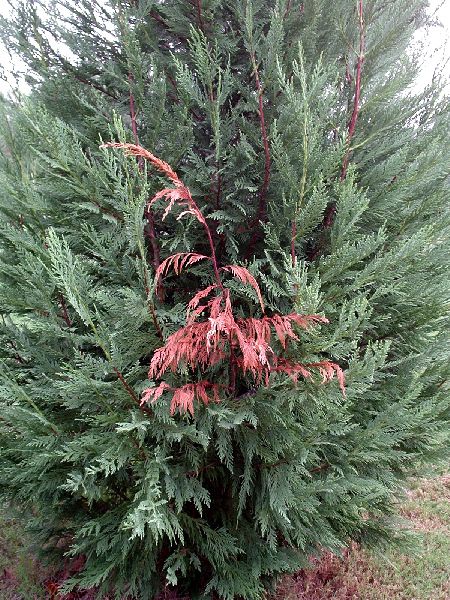Description:
This fungal disease can be caused by three possible fungi: Seiridium cardinale, S. cupressi, or S. unicorne. The most common tree affected is the Leyland cypress, but it can also affect trees from the Cupressus, Juniperus, Platycladus, Cryptomeria, and Libocedrus families. Infections are more severe in dense plantings and older trees with dense canopies because this infection thrives in high leaf wetness and shade. When there are high amounts of precipitation, spores can be spread through the splashing of water and will carry the infection to wounded twigs.
Damage:
The first signs of this disease is the discoloration of branches from green to reddish brown, this starts in the lower canopy and slowly progresses upwards. If you closely examine the infected branch you will find sunken, reddish cankers near the base of the branch, these cankers tend to exude resin. Left unmanaged, these cankers will spread to the main trunk of the tree and will eventually result in death of the tree.
Treatment Options:
There are several treatment options available for seiridium canker. Fill out the form of this page or contact our office to consult with an arborist today!
Photos:


